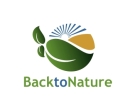Introduction
It is widely known that nutritionists and dietitians encourage us to consume a diet based on a rainbow of foods. Green leafy vegetables, yellow peppers and squash, orange carrots, red apples, purple cabbage, and so on.
Each of the colors represents a different nutrient or compound that work with your body to keep it healthy. These colors make the food visually appealing. Since we eat with our eyes before anything goes into our mouths, we strive to keep our food attractive.
In the age of processed foods, however, food coloring is added to create that fresh, attractive look. Bright red strawberry fillings in cereal bars and multi-hued candy coated shells dazzle our eyes and make our stomachs rumble in anticipation. Read More…
Moreover, colors stimulate certain feelings and moods.
Did you know that the color pigments in food affect the different parts of the body? I think this sounds amazing. Join me in following the rainbow of beautiful colors offered in the bounty of fresh fruits and vegetables and discover that “gold”.
I will call this adventure the Color Me Beautiful series. The concept that the color’s in our fruits and vegetables have a powerful impact on our health intrigued me. In this series, I will be sharing about what is behind these colors in our foods and what these beautiful colors of the rainbow mean for your health. Once people are aware of this dietary color concept, we are encouraged to creatively including fruits and vegetables at meals that will help them to include a wide range of different foods.
Sources:
Today’s Dietitian http://www.todaysdietitian.com/newarchives/110308p34.shtml
How Color Affects Us
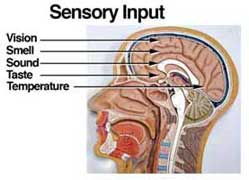 The Language of Color
The Language of Color
Did you know that color has a language all of its own? Color has a profound effect on the mind and behavior and body.
This question pertains to the condition known as synesthesia. This condition describes how our senses work together. For example – with respect to sight, taste and smell – seeing a color may evoke any number of other sensations. Color plays a multitude of roles in the natural world, used to entice, to camouflage, or to warn other creatures. Colors signal harvest time, breeding conditions, and the change of seasons, from the first greens of spring to the brilliant, beautiful reds and browns of the fall. Each sense has a pathway to the brain. These paths are parallel to each other as you can see from the illustration. Flavonoids are incredible sensory chemicals. Just as flavonoids are not just for the attraction of insects, they also send signals to us. Green may bring strong images or memories of the smell of grass, lemon yellow may recall a sour taste. Pink may convey sweetness and so on.
In this series, we will explore the effects that color has on us and how each sense and its pathway to the brain is involved and interconnected and how it communicates messages to us on a psychological and physical level.
On a psychological level – 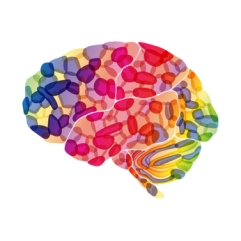 Color plays a vitally important role in the world in which we live. Color can sway thinking, change actions, and cause reactions. It can irritate or soothe your eyes, raise your blood pressure or suppress your appetite. When used in the right ways, color can even save on energy consumption. As a powerful form of communication, color is irreplaceable. Red means “stop” and green means “go.” Brain chemistry is only now being understood to a greater level. There is a dance of neurotransmitters and hormones inside your body determine the bulk of your moods and personal satisfaction. As a society we’ve gradually shut down the production of these substances with our diet and lifestyle choices. The result has been a dramatic increase in depression, eating disorders, suicide rates, substance abuse, and general unhappiness that affects every part of your daily life.
Color plays a vitally important role in the world in which we live. Color can sway thinking, change actions, and cause reactions. It can irritate or soothe your eyes, raise your blood pressure or suppress your appetite. When used in the right ways, color can even save on energy consumption. As a powerful form of communication, color is irreplaceable. Red means “stop” and green means “go.” Brain chemistry is only now being understood to a greater level. There is a dance of neurotransmitters and hormones inside your body determine the bulk of your moods and personal satisfaction. As a society we’ve gradually shut down the production of these substances with our diet and lifestyle choices. The result has been a dramatic increase in depression, eating disorders, suicide rates, substance abuse, and general unhappiness that affects every part of your daily life.
On a physical level: 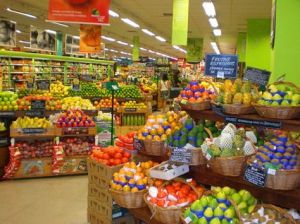 Have you noticed the central role food plays in your life? From the time we are born, we develop a deep association linking food with emotions. We move through life linking food to emotions. We celebrate holidays, weddings, graduations, and promotions with food. We use food to express, suppress, and deal with love and we drown our sorrows and many other emotions. Food powers your life. It fuels all bodily processes that enables you to move, think, and breathe. There is no aspect of your life that is not influenced by what you eat. Consider how strength, agility, coordination, endurance, speed and level of performance are all powered by the foods you eat. Natural food gives natural energy. What you eat determines how you tackle your daily physical activities, including housework, your job, school, homework, shopping, caring for a family and exercise. Eating healthy enables body movements to be executed with ease. A poor diet with unhealthy food choices can make each movement a major effort filled with stress, strain, and pain. Which lifestyle sounds like the way you would like to live? It isn’t easy to change the habits of lifestyle. We sometimes need help. Jumpstart your health with a good supplement of your choice. Just make sure it is a good, reliable brand.
Have you noticed the central role food plays in your life? From the time we are born, we develop a deep association linking food with emotions. We move through life linking food to emotions. We celebrate holidays, weddings, graduations, and promotions with food. We use food to express, suppress, and deal with love and we drown our sorrows and many other emotions. Food powers your life. It fuels all bodily processes that enables you to move, think, and breathe. There is no aspect of your life that is not influenced by what you eat. Consider how strength, agility, coordination, endurance, speed and level of performance are all powered by the foods you eat. Natural food gives natural energy. What you eat determines how you tackle your daily physical activities, including housework, your job, school, homework, shopping, caring for a family and exercise. Eating healthy enables body movements to be executed with ease. A poor diet with unhealthy food choices can make each movement a major effort filled with stress, strain, and pain. Which lifestyle sounds like the way you would like to live? It isn’t easy to change the habits of lifestyle. We sometimes need help. Jumpstart your health with a good supplement of your choice. Just make sure it is a good, reliable brand.
Color Affects Taste and Smell. Nature has a clever way to highlight the nutrients in foods: different nutrients actually impart different colors to the foods they’re in and as they ripen they produce a scent. Just the sight of food fires neurons in the hypothalamus, the front part of the brain that coordinates both the autonomic nervous system and the activity of the pituitary, controlling body temperature, thirst, hunger, and other homeostatic systems, and involved in sleep and emotional activity. If you ask my daughter, my shopping partner, how she would describe her grocery shopping experience with me, she would probably elaborate on my attention given to this one small area of the store with all of the brilliant colors in the fruits and vegetables in the produce section. I spend most of my time there salivating with excitement on the experience I will have in eating these bright-colored foods. The sense of life drops considerably when proceeding to the other areas of the store. Are you drawn to certain colored foods?
Pigmentation in Plants 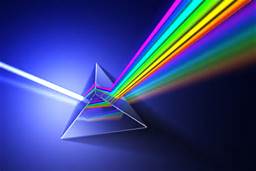
In plants, these substances provide pigmentation and help filter UV rays. They also help protect the plants from microbe, fungus, and insect attacks; and help plants survive frost and droughts. Additionally, they help promote or inhibit the growth of certain plant parts, including seeds and pollen tubes, and are used as chemical signals to tell plant cells when to stop or start doing things. Flavonoids are a group of plant metabolites thought to provide health benefits through cell signalling pathways and antioxidant effects. They are essential pigments for producing the colors needed to attract pollinating insects. These biological pigments are pigments produced by living organisms. They can be found in many plants, including flowers and even in our skin. Bacteria are colored by pigments. All biological pigments selectively absorb certain wavelengths of light while reflecting others.
Color arises fr om the way the pigments react with light. Biological pigments in plants exist in a wide variety of forms, some with highly complex and large structures. Over 600 naturally occurring carotenoid structures have been identified, as well as over 7,000 flavonoids, including over 500 anthocyanins.
om the way the pigments react with light. Biological pigments in plants exist in a wide variety of forms, some with highly complex and large structures. Over 600 naturally occurring carotenoid structures have been identified, as well as over 7,000 flavonoids, including over 500 anthocyanins.
I am excited to raise a whole new appreciation for our colorful world and all of its bounty and benefits. All color comes from light. Consider where the light comes from. From the word of this light, all of creation and its beauty was made. Genesis 1:3, 31 says. “And God said, Let there be light: and there was light…31 And God saw every thing that he had made, and, behold, it was very good.”
Sources:
Yellow, The Vision Vitamin
 Imagine with me why certain fast food places use yellow and red colors.
Imagine with me why certain fast food places use yellow and red colors.Take Kentucky Fried Chicken (KFC), McDonald’s, Burger King and the other fast food establishments in the image on the right for instance. These colors are just one marketing ploy that are eye-catching and get your attention to roll in to their establishment for that quick fast food.Why not stick with real fast yellow food? Here are some really good reasons why?
Yellows from The Latin word Lutein lutes means “yellow”.
Specifically, Yellow from Latin luteus meaning “yellow” is a xanthophyll – greek xanthos (ξανθός, “yellow”)[1]and phyllon (φύλλον, “leaf”) specifically a plant chemical geared to protect the eyes by modulating light energy. Originally phylloxanthins are yellow pigments from the carotenoid group.
Lutein is a carotenoid phytonutrient (plant nutrient), which range from yellow to red
pigments
Carotene is a pigment that absorbs blue and indigo light, and that provides rich yellows and oranges.
Lutein and Zeaxanthin are carotenoids that are found in relatively high concentrations in the retina. Lutein’s yellow color blocks blue (UV) light from absorption. Both Lutein and Zeaxanthin helps protect the eye from ultra-violet (UV) damage, and prevents free-radical damage to the retina and the lens of the eye that is associated with diabetic retinopathy, macular degeneration, cataracts, and glaucoma.
 …Yellow foods are commonly considered the eyesight foods
…Yellow foods are commonly considered the eyesight foods
because they contain vitamin A. Beta-carotene, which can be converted into vitamin A, is a component of these foods as well. Since eyesight is dependent on the presence of vitamin A, it is considered the “vision vitamin.” Our eyes use the yellow pigment lutein as an antioxidant, especially in the macula, in the center of the retina at the back of the eye contains a lot of lutein. This protects the eyes from the UV sunlight rays. It also seems to lower the risk of developing Age-related Macular Degeneration (AMD).In addition, they may have high levels of vitamin C, and some contain omega-3 fatty acids according to Kasik-Miller, a clinical dietitian at Sacred Heart Hospital in Eau Claire, Wisconsin.
…Natural Sunblock (think yellow/orange-red like the sun) The yellow pigment, lutein, is also known to absorb excess light energy to prevent damage to plants from too much sunlight. Our skin uses the yellow pigment lutein to recharge the antioxidants that protect the glands that make the oily lubricant that keeps the skin supple and wrinkle-free. If we consume our leafy greens and other yellow pigment foods, these protective antioxidants protect our skin from oxidative damage. This is why our ancestors most likely did not use sunscreen lotions. Antioxidants reduce the risk of many health problems associated with aging, including heart disease, cancer, arthritis, diabetes, cataracts and macular degeneration, Alzheimer’s, Parkinson’s and others.

Sunlight is very important for our skin. Americans tend to be deficient in Vitamin D3 because we are inside more than we are outside. Please visit my Vitamin D Councilboard for more information about this topic. Americans are also afraid of the sun lathering up with all those sun screens. If we are wise and respect the power of the sun, there is no need to buy all those chemically filled sunscreens that short-circuit the benefits of the suns rays that create an atmosphere that brings damage to the skin. Here are other sunscreen options.
…Yellow appears to have important antioxidant functions in the body including vitamin C, beta carotene, and vitamin E that guard the body from damaging effects that can destroy cells and play a role in many diseases….Yellow was thought to stimulate the nerves and purify the body in light therapy treatment.
Yellow (under color green) ~ Lutein
Another interesting fact about yellow is how it is hidden under the top layers of green in your leafy greens. This is why we get the different colors of tree leaves in the fall. This means that those leafy greens also contain this yellow pigment to bring you all of the great benefits of this beautiful nutrient. The body cannot absorb lutein without the help of fat, so when eating your leafy green salads or smoothies, include a type of fat like Avocado, coconut oil, or a nut of your choice.
On a Spiritual note: There exists an old saying in American culture: “The eyes are a window to the soul.” Matthew 6:22 (KJV) says, “The light of the body is the eye: if therefore thine eye be single, thy whole body shall be full of light.”
I would encourage you to take care of your eyes with yellow foods. Let your eyes feast on this yellow that can trigger the feelings of happiness and friendliness, warmth like the sun. Take care in what you allow your eyes to see. May the light of the Lord’s words help you to be a light bringing sunshine to someone else as Matthew 5:16 (KJV) says, “Let your light so shine before men, that they may see your good works, and glorify your Father which is in heaven.”
Yellow Vegetables: Yellow peppers; yellow courgettes; yellow tomatoes; sweet corn; golden corn; parsnips; swedes; turnips; yams; marrow.
Yellow Fruits: Grapefruit; lemons; honeydew melons; bananas; pineapples; apples; pears; star fruits.
Try this yummy recipe: tropical-pineapple-mango-salsa
